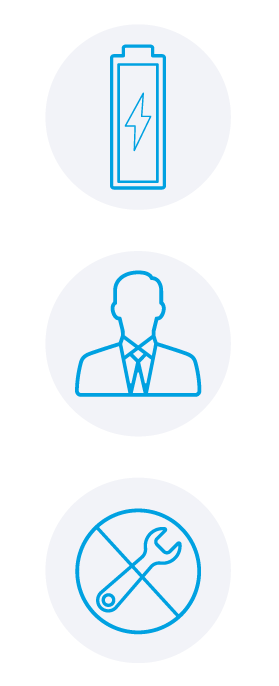LPWA: New Approach for an Old Problem
Ubiquitous wireless connectivity means a business can track its assets as they travel across countries and borders without having to worry about any of the connectivity issues going on in the background; the public network is simply professionally managed by the wireless provider. Low-power connectivity means that the company’s trackers don’t need to have the batteries changed or charged every few days or weeks. This is what low-power, wide-area (LPWA) wireless connectivity gives to organization tapping into the IoT for business value.

The term LPWA may be relatively new, but the concept of low-cost, low-power connectivity has been around for a while with other names: Machine-to-Machine (M2M), Wireless Sensor Networking (WSN), Internet-of-Things (IoT), etc.

THE LPWA BUSINESS
The Role of the Carrier
The carrier, or wireless provider, owns and operates the LPWA network. They manage the infrastructure, repair and maintain the infrastructure, plan its deployment to optimize tower placement, arrange for backhaul to the cloud, and work with the many governments to get permitted and legally operate. The carrier invests in building this network and charges applications for the use of this network. The successful carrier business profits by the revenue (connectivity fees from the applications) exceeding the expenses of running the LPWA network (tower rental, backhaul expenses, construction costs, human resources, etc.).
The Role of the Application or Device
Applications or devices are benefitted by the connectivity that the LPWA network provides. The device is what provides the data and interactivity the end user is seeking to obtain business value from the IoT. For an application to participate in an LPWA network, there must be a positive return-on-investment (ROI) of this connectivity. In other words, the value provided by the device combined with the LPWA connectivity must exceed the connectivity fees paid to the carrier and the costs to develop and maintain the device. The capabilities of the connectivity directly influence the capabilities of the devices and the value they bring the people and organizations using them.

LPWA Network Value. Connecting Billions.
The amount of revenue per LPWA tower to the carrier will typically be directly proportional to the number of endpoints served by that tower. Capacity is the metric that determines the creation of economic value to both the carrier and the application. If there is insufficient capacity then there won’t be enough devices bringing in revenue to pay for the costs of constructing and operating the tower. That means there is only liability to split and the LPWA network is ultimately doomed. Of all existing LPWA technologies, only Ingenu’s RPMA has the capacity to make a sustainable business case.
From a carrier’s point of view, the carrier wants to build ubiquitous coverage with as little infrastructure cost as possible. But those towers built to provide coverage must also have enough capacity and thus revenue to sustain the towers and other infrastructure required to provide that coverage. Coverage is an up-front capital cost; capacity represents how profitable the network may be long-term based on number of devices supported.
RPMA INNOVATION. BEARING THE LPWA MANTLE.

RPMA began a fully unconstrained intensive technology development in 2008 to provide very low-cost, low-power, feature-rich, and robust connectivity for IoT devices before the term IoT was even being used. Such an ambitious undertaking required a significant technology development. The proof is in the pudding. RPMA uniquely addresses all the requirements. No other approach comes close.

